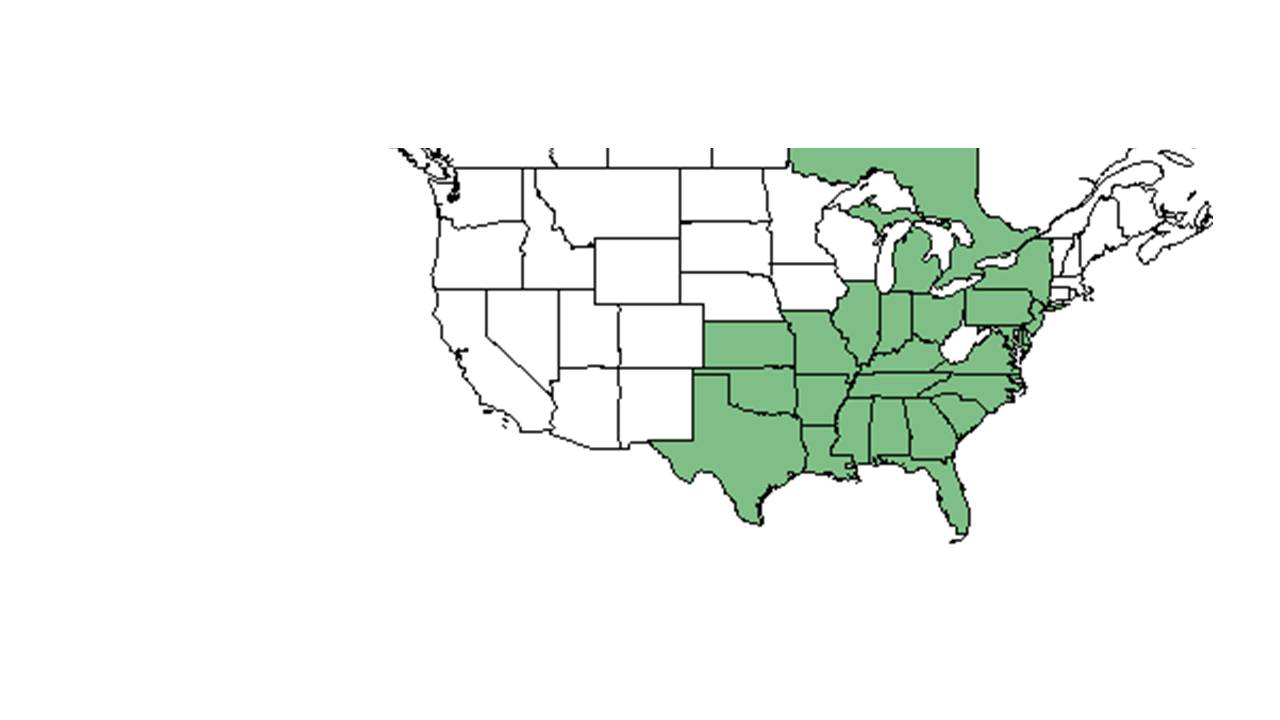Buchnera floridana
| Buchnera floridana | |
|---|---|

| |
| Photo by John R. Gwaltney, Southeastern Flora.com | |
| Scientific classification | |
| Kingdom: | Plantae |
| Division: | Magnoliophyta - Flowering plants |
| Class: | Magnoliopsida - Dicotyledons |
| Order: | Scrophulariales |
| Family: | Scrophulariaceae |
| Genus: | Buchnera |
| Species: | B. floridana |
| Binomial name | |
| Buchnera floridana L. | |

| |
| Natural range of Buchnera floridana from USDA NRCS Plants Database. | |
Contents
Taxonomic notes
Description
For the genus Buchnera, is hispid to pilose perennials with erect, simple stems growing up to 4-8 dm tall. The entire plant turns black when dried. The leaves are opposite, elliptic to ovate-lanceolate in shape, grows up to 3-7 cm long, 5-15 mm wide, and is reduced above. The leaves are entire or irregularly serrate or crenulate, sessile. The inflorescence is an open spike, the flower are in the axils of opposite bracts and subtended by 2 bractlets. The calyx tube is cylindrical, grows up to 3.5-5 mm long, the lobes 5, lanceolate in shape, slightly unequal, up to 1 mm or less long. The corolla is purple or white in color, subsalverform, weakly zygomorphic, lobes 5, shorter than the calyx tube. Up to 4 fertile stamens are present with anthers with only a single sac. The capsule is ovoid or pyriform, grows up to 5-6 mm long and is loculicidal in shape (Radford 1964).
Specifically, for Buchnera floridana, the leaves are not 3-veined or not as conspicuous are B. americana. The leaves are lanceolate to elliptic in shape. The corolla tube grows up to 8-10 mm long and the lobes grow up to 4-5 mm long. Flowers from April to October (Radford 1964).
Distribution
Ecology
It is a host plant of Brevipalpus phoenicis, which vectors viral diseases like citrus leprosis (Childers et al 2003).
Habitat
This species has been observed in Everglades National Park (FSU Herbarium).
Phenology
B. floridana has been observed flowering and fruiting in December (FSU Herbarium).
Seed dispersal
Seed bank and germination
Fire ecology
Pollination
Use by animals
Diseases and parasites
Conservation and Management
Cultivation and restoration
Photo Gallery
References and notes
Childers, C. C., J. C. V. Rodrigues, et al. (2003). "Host plants of Brevipalpus californicus, B. obovatus, and B. phoenicis (Acari: Tenuipalpidae) and their potential involvement in the spread of viral diseases vectored by these mites." Experimental & Applied Acarology 30: 29-105.
Florida State University Robert K. Godfrey Herbarium database. URL: http://herbarium.bio.fsu.edu. Last accessed: June 2014. Collectors: V. I. Sullivan and J. Wooten. States and Counties: Florida: Monroe.
Radford, Albert E., Harry E. Ahles, and C. Ritchie Bell. Manual of the Vascular Flora of the Carolinas. 1964, 1968. The University of North Carolina Press. 954-5. Print.